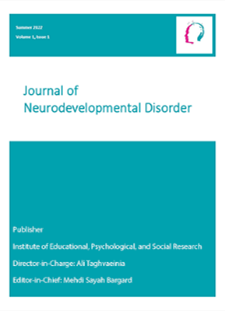The Relationship Between Parental Reports of Their Children's Obsessive-Compulsive Symptoms and Thought-Action Fusion With the Parent-Child Relationship Structure in Adolescents With Obsessive-Compulsive Disorder
Keywords:
Obsessive-compulsive disorder, thought-action fusion, , parent-child relationship, parental perception, adolescent OCD, family dynamicsAbstract
Purpose: This study aimed to examine the relationship between parental reports of their children's obsessive-compulsive symptoms and thought-action fusion with the structure of the parent-child relationship in adolescents diagnosed with obsessive-compulsive disorder (OCD).
Methodology: This descriptive-correlational study was conducted on 83 adolescents diagnosed with OCD and their parents. Participants were selected through a multi-stage process, beginning with the screening of 400 middle school students in Ardabil, followed by diagnostic interviews based on DSM-5 criteria. The final sample consisted of 83 adolescents and 83 parents. Data collection tools included the Obsessive-Compulsive Inventory-Child Version (OCI-CV), the Yale-Brown Obsessive-Compulsive Scale for Children—Parent Report, the Parent-Child Relationship Questionnaire, and the Thought-Action Fusion Questionnaire. Data were analyzed using Pearson’s correlation coefficient and multiple regression analysis in SPSS-26.
Findings: The results indicated a significant negative correlation between parental reports of OCD symptoms and the quality of the parent-child relationship (r = -0.27, p = 0.041), suggesting that higher parental reports of obsessive-compulsive symptoms were associated with a more dysfunctional parent-child relationship. Regression analysis revealed that parental reports of OCD symptoms significantly predicted the parent-child relationship structure (B = -0.08, p = 0.02), whereas thought-action fusion did not emerge as a significant predictor (B = 0.07, p = 0.06). The two predictor variables accounted for 11% of the variance in the parent-child relationship structure (R² = 0.11).
Conclusion: The findings highlight the significant role of parental perceptions in shaping the parent-child relationship in adolescents with OCD. Higher parental reports of their children's symptoms were associated with poorer relational dynamics, emphasizing the need for family-based interventions that address parental responses to OCD symptoms and promote adaptive communication patterns.
Downloads
Downloads
Published
Submitted
Revised
Accepted
Issue
Section
License
Copyright (c) 2025 Zahra Rashidi Vala (Corresponding author); Azra Ghaffari Nooran (Author)

This work is licensed under a Creative Commons Attribution-NonCommercial 4.0 International License.

